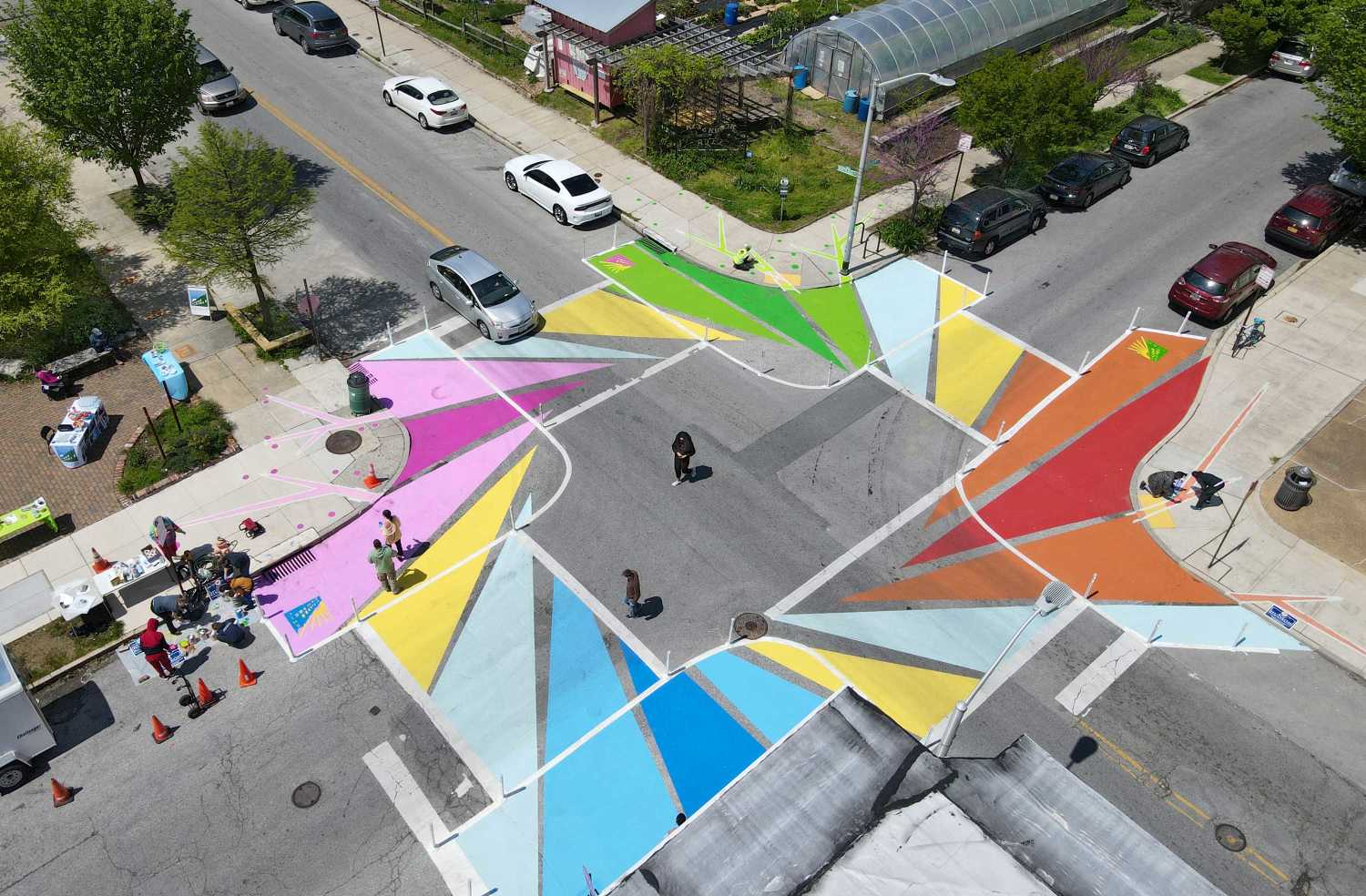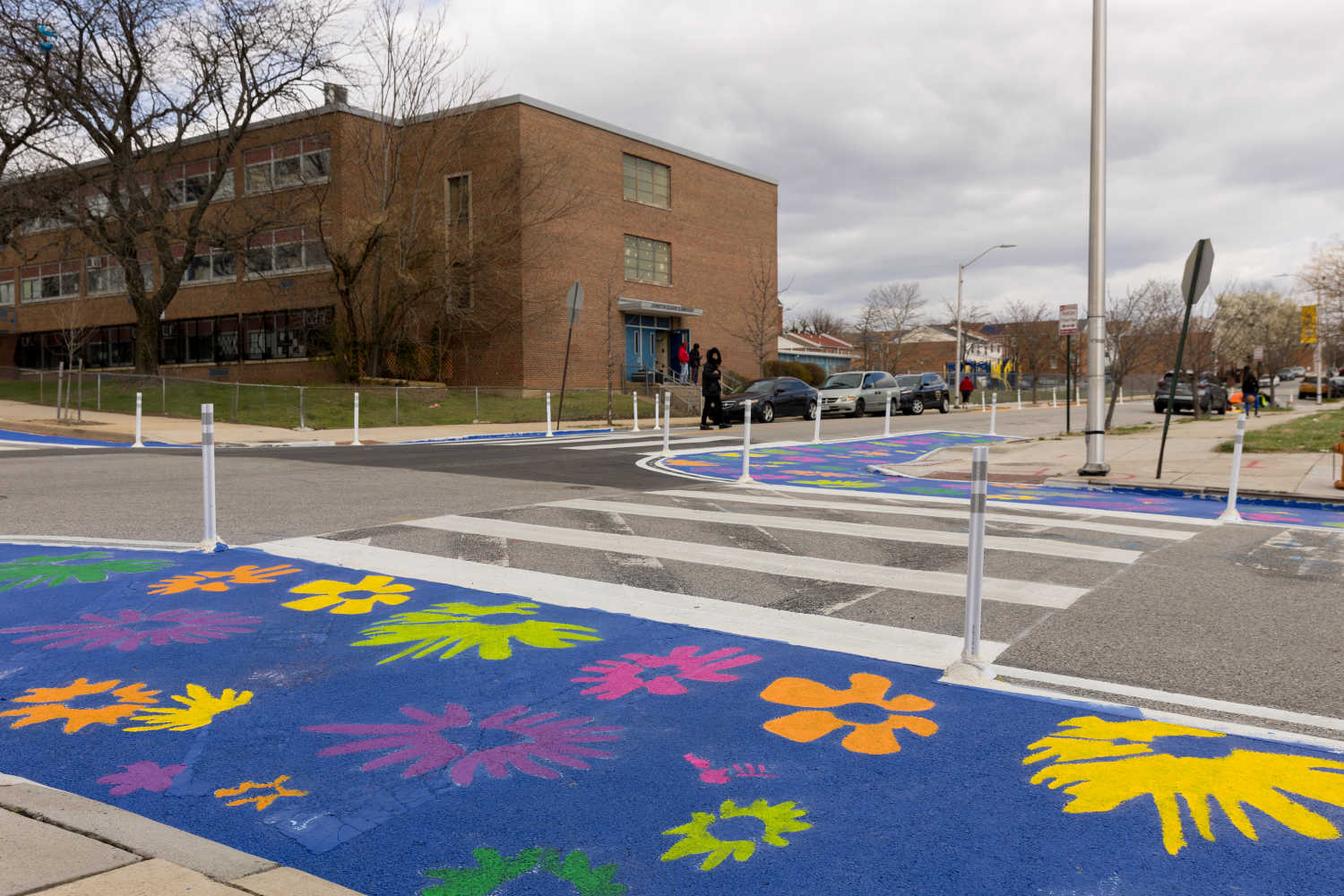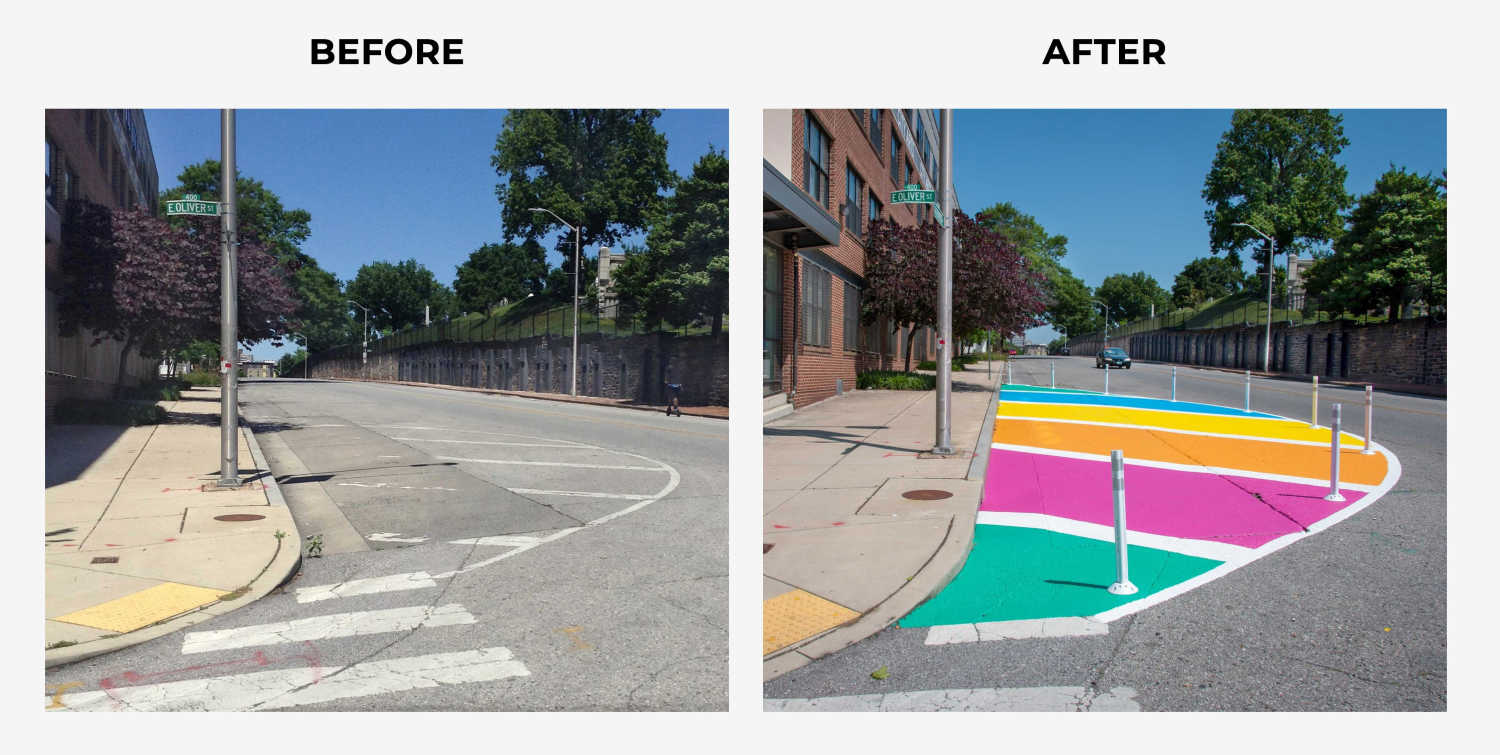News
April 18, 2022Made You Look: Art in the Right of Way

On average, a Baltimore resident dies every week from injuries sustained in a traffic-related accident (2017 data). Additionally, someone is injured in a traffic-related accident every hour. Neighborhood Design Center has partnered with MICA’s Center for Social Design and the Maryland Department of Transportation’s Highway Safety Office to support design interventions to help save lives and prevent traffic-related injuries in Baltimore.
The initiative, Made You Look, was conceived by MICA graduate students Quinton Batts (MASD ’19) and Vilde Ulset (MASD ’19) who investigated ways to reduce these troubling statistics through design interventions as part of their graduate coursework.
One solution they explored was artistic approaches to traffic-calming, which is defined by the U.S. Department of Transportation as “the combination of measures that reduce the negative effects of motor vehicle use, alter driver behavior, and improve conditions for non-motorized street users.” For example, horizontal murals painted in crosswalks and sidewalk bump-outs can alert drivers’ attention to pedestrians, bike-riders and other road users. Planning departments describe these interventions as Art in the Right of Way.

Batts and Ulset didn’t anticipate their project would last beyond a semester, but their work quickly gained attention and traction, far outgrowing its original intent. In the years since the project began, the team has secured four years of funding from the Maryland Department of Transportation Highway Safety Office, built a network of community partners, added members to the team, and the project has turned into a career for Batts and Ulset.
“Our grad school project became our mission for years and after graduate school formed into a four-year job.”
— Vilde Ulset


The need for traffic calming measures has resonated with many communities like Johnston Square, where vehicles have been tracked going more than 80 mph in a school zone and a two-year-old was killed when struck by a vehicle in the neighborhood.
IMPACT within the community
Prior to installation, the area behind the school was used as a preferred access point for parents and students due to the location, despite high rates of speeding and missing crosswalks.
Dolores McKoi, a crossing guard posted near the school, sees the danger every day. “I’ve had the problem of children almost getting hit by cars not stopping,” she said in a video interview. The city’s transportation department clocked vehicle speeds as high as 85 MPH during school hours.
After the safety interventions, the school felt comfortable adding a second dismissal location at the new mid-block crossing on Chase Street in addition to the overcrowded front entrance, allowing for a more efficient and safe pick-up process.
The need for traffic calming measures has resonated with many communities like Johnston Square, where vehicles have been tracked going more than 80 mph in a school zone and a two-year-old was killed when struck by a vehicle in the neighborhood.
The team collaborated with NDC and ReBuild Johnston Square to work with the community in envisioning a project that best fit their needs and secure grant funding. In March, the Baltimore Department of Transportation installed large bump-outs on three intersections near Johnston Square Elementary School and community volunteers painted colorful murals on the crosswalks. The mural painting was well attended by community members and partners, including a film crew from Bloomberg Philanthropies who has also partially funded the mural. The mural was designed by volunteers from NDC’s Community Design Works program as part of a branding initiative for the Johnston Square neighborhood.
Creative crosswalks bring artistic placemaking efforts to a neighborhood, and the team collects data to show the installations do calm traffic. In one neighborhood, observers documented only 20 percent of drivers yielded to pedestrians in the crosswalk prior to installing art.
Johnston Square stats
Crossing distances were cut in half
The percentage of cars yielding to pedestrians increased from 37% to 78%
After the safety interventions, the school felt comfortable adding a second dismissal location at the new mid-block crossing on Chase Street in addition to the overcrowded front entrance, allowing for a more efficient and safe pick-up process.
View the complete project summary at Bloomberg Philanthropies
“I use less time to cross because of the artwork. The bump-outs also make it easier for cars to see me while I am waiting to cross. I feel they notice me more and slow down for me.”
— Neighborhood resident
The positive impact is impressive, however, the effort to make these Art in the Right of Way projects accessible to more communities throughout Baltimore is not without its challenges.
“It takes a lot of money to do these installations,” says Ulset. “Most of the time they (the communities) have to come up with the money on their own. If it’s (crosswalk) already ADA (Americas with Disabilities Act) compliant, the City is not going to go out of their way to get something new.”


The cost related to the installations, including items like paint, permits, insurance and more can be expensive. There are also many steps involved in getting to a complete design. After spending time observing possible traffic safety issues in the area, communities must work with the Department of Transportation to determine what type of design intervention works best to address their neighborhood’s needs. From painting crosswalks to installing bump-outs, there are a range of design intervention possibilities. Community listening is vital, and ensuring all voices are heard in the decision-making can be a challenging process.
“The Communities have to do it themselves. Everything takes time. There are a lot of opinions, and finding a consensus is both the fun part and the frustrating part.”
— Quinton Batts

The Made You Look Toolkit was created in order to ease some of the frustration for communities in trying to implement traffic calming measures in their neighborhoods. Based on the research and work done through the project, the Made You Look Toolkit is a step-by-step guide to help communities through the process of securing funding, community listening and more to create Art in the Right of Way projects in their own neighborhoods. Learn more at madeyoulookbaltimore.org or our Resources page.
In addition to the toolkit, communities can rent all the tools they need for a crosswalk installation from the Station North Tool Library.
In the coming months, look out for a new website that will be home for the updated toolkit, case studies on local projects, resources and much more. With these tools in hand, the hope is that communities throughout Baltimore can implement these measures to create safer, stronger neighborhoods for all.